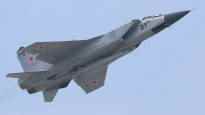Hypersonic missiles, i.e. flying at multiple times the speed of sound, are faster and more likely to hit their target than conventional missiles. The destructive power of the Zircons promoted by Putin is probably lower than its predecessors.
the president of Russia Vladimir Putin the glowing hypersonic Tsirkon missiles hardly have anything to do with the war in Ukraine. This is also stated by a researcher at the Foreign Policy Institute Jyri Lavikainen that a specialist researcher at the National Defense University’s Department of Military Technology Juha Honkonen.
– The new weapons are aimed above all as a deterrent against the United States, Lavikainen states.
According to him, the purpose is not only to send a message to the United States about Russia’s performance, but also to convince its own citizens that the situation is under control.
– Russia is very skilled at making media events about its large weapon systems. When we look at what is happening on the ground in Ukraine, a traditional artillery war has been fought there and a lot of Soviet-era equipment has been used.
What is a hypersonic missile?
Hypersonic missiles, i.e. flying at several times the speed of sound, are faster and more likely to hit their target than conventional missiles.
Hypersonic missiles fly at supersonic speed, i.e. more than 340 meters per second. Hypersonics travel at more than five times the speed of sound. On the ground, it means at least 1,700 meters per second, but the speed of sound decreases as the flight height increases. Traditional subsonic missiles fly slower than the speed of sound.
On long trips, the difference is big. Based on tests, Tsirkon flies 450 kilometers in four and a half minutes. With an ordinary cruise missile, it takes approximately 30–35 minutes to make the same trip.
Because of the speed, hypersonic weapons are harder to counter than traditional ones.
– Current anti-missile missiles are not capable of such high speeds. This is a problem in terms of defense, says Honkonen.
The attack is also in trouble because of the trajectory of the hypersonic missiles.
They fly very high, up to 30-40 kilometers. Otherwise, the air resistance would be too great and prevent long ranges. Traditional cruise missiles, on the other hand, fly low, at best only a few meters above sea level.
– The hypersonic missiles come from so high and the final approach comes so sharply that it is difficult to repel them. Current control systems hardly see straight up, says Honkonen.
Smaller destructive power than a conventional missile
Putin has called hypersonic Tsirkon missiles “miracle weapons”. In reality, the destructive power of Tsirkons is lower than similar traditional missiles, Honkonen thinks.
According to Honkonen, the hypersonic weapons promoted by Putin will be launched from the same frame as the current cruise missiles. Therefore, they cannot differ in external dimensions from their predecessors.
The missile can hold less explosive than its predecessors, because hypersonic speed requires more fuel than usual, which takes up space.
Tsirkon cruise missiles fly up to 8-9 times the speed of sound, and according to Russia, their range is a thousand kilometers. It folds in less than ten minutes.
– The missile system is apparently almost ready for use. Fifty successful test shots have been made with them, Honkonen says.
Anti-sea missiles mainly against the USA
Zircons are anti-ship missiles. According to Honkonen, they are designed to destroy aircraft carrier groups, which are mainly in the United States.
In Ukraine, the fighting is concentrated on the land. Russia has also used standard anti-sea missiles to some extent. However, according to Honkonen, Ukraine has not been able to combat them very well.
– I don’t think the use of zircons in Ukraine is likely. There is absolutely no reason for that, Honkonen states.
Russia has probably used hypersonic weapons in the war in Ukraine, both experts believe.
– With the strike, it was possible to test the functionality of the system in practice, and demonstrate it to the United States as well. In addition, the weapon is more accurate than the old Soviet-era missiles. If you really want to destroy the target, a modern weapon is better because it is more likely to hit, says Lavikainen.
Kinzhales are more difficult to control
The Kinzhal missiles that made headlines earlier are even faster than Zircons. They are capable of ten times the speed of sound. They are also more destructive than Zircons. According to Honkonen, Kinzhali has maybe up to 500 kilos of explosives, Tsirkon maybe 100–200 kilos.
Hypersonic missiles also differ in their operating principle.
Tsirkon works with a jet engine, which is in use throughout the flight. Therefore, the device can be controlled by both the motor and the wings.
Kinzhal, on the other hand, works with a rocket engine, which is only used for a fraction of the flight time. That’s why it can only be steered with ailerons.
– It is less efficient than steering with both ailerons and an engine, Honkonen sums up.
“Russia is not significantly strengthening”
In Russia, there is hardly enough grain to produce large quantities of missiles traveling at many times the speed of sound, thinks Jyri Lavikainen. Their production is slow, especially now that economic sanctions limit the import of components needed by the military industry to Russia.
According to Lavikainen, the purpose of Russia’s newest weapons is to maintain Russia’s performance against the United States.
– It is not so clear that if a new missile is obtained, it will be fired immediately into a Ukrainian warehouse.
Neither expert believes that hypersonic weapons could significantly affect the course of the war in Ukraine.
– Russia is not significantly strengthened militarily by having some hypersonic weapons at its disposal, Lavikainen states.
